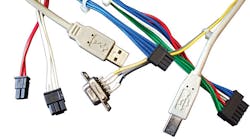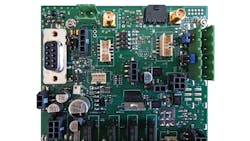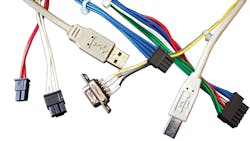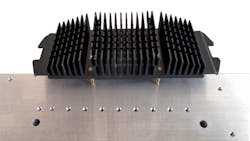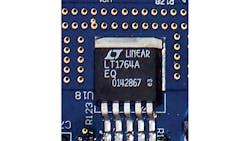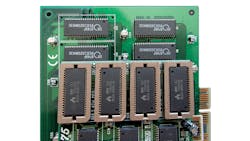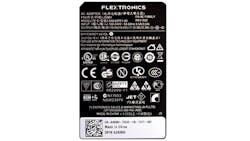Download this article in .PDF format This file type includes high resolution graphics and schematics.
How do you create low-cost designs? Companies that ask this question usually want to build thousands or millions of products, and cost certainly is one of the factors. But cost isn’t always the main driver of the design. In some cases, it’s the second or third driver, usually behind performance or low noise.
So how do you produce a low-cost design and still meet the performance specs that may be even more important than cost? Seven elements most affect product cost: interconnects and materials, components and manufacturers, printed-circuit board (PCB) and assembly, board implementation and integration, equipment layout and enclosure, serviceability and the final user, and certifications.
Table Of Contents
• Interconnects And Materials
• Components And Manufacturers
• PCB And Assembly
• Board Implementation And Integration
• Equipment Layout And Enclosures
• Serviceability And The End User
• Certifications
• Other Considerations
Interconnects And Materials
The physical interconnect typically is the most expensive element, anywhere from 5% to 20% of your electronic bill of materials (BOM), depending on the particular equipment. This is because of three factors. First, high-quality interconnects such as gold platings are pricey. Second, the quality and complexity (or simplicity) of the product layout might significantly impact manufacturing, serviceability, and product longevity. And third, low-quality interconnects might be fragile (or sensitive to aging) or corrode when mixed materials are used. This is a particularly tricky issue that won’t show up until several weeks after field operation when the material will show signs of degradation.
In that sense, the best strategy is to develop a careful physical layout that optimizes the product geometry from the overall system point of view and use standard (low-cost) connectors (Fig. 1). You should also account for the environmental conditions that your product will be subjected to because they might dictate whether stainless steel parts are required rather than cheaper materials. For example, an office product doesn’t have the same stringent requirements as outdoor field equipment.
1. Multiple connector styles are common in a design, but they represent a variety of parts that have to be inventoried. Different connector styles also require different cable harnesses, but they minimize the assembly error.
Components And Manufacturers
There is no easy path to minimize the total number of components, but you can minimize costs by maximizing the use of the same component type and value. Standardize all the resistors, capacitors, ICs, and other components to a single type and value as much as possible will help to consolidate parts in your system. (Standardizing the connectors to a few types could help minimize cost).
Related Articles
• Components Meet Challenges With Continued Innovation In 2012
• Expect 2012’s Packaging Co-Design Improvements To Continue Into 2013
• Package Interconnects Can Make Or Break Performance
Furthermore, you can forge a better alliance if you use components from a single vendor instead of components from multiple manufacturers. This is not truly visible until you realize how the inventory of all the parts and the procurement process behind it impact the product cost. The product cost is associated with the entire company and its processes.
Also, minimize “custom components,” but this is easier said than done. If your design calls for a particular transformer, it is up to you to evaluate if that particular approach is better or if you should be evaluating a different configuration. Potentially, you can significantly reduce a design BOM by using generic components that are available off-the-shelf. (Notice that some custom components might require an additional certification.)
On the other hand, you should leverage your company’s capabilities, including all the component libraries and the inventory. Your company could be using that transformer everywhere in its designs, and maybe it has the assembly line to assemble the transformer itself. If this were the case, then take advantage of your custom company components.
Download this article in .PDF format This file type includes high resolution graphics and schematics.
There might be also alternative parts that are cheaper for a particular application. This is not an easy path since some components might provide a better performance than others. So here the tradeoffs start—what’s more important, performance or cost? Also, some components might be significantly more reliable. Then the tradeoff is between product lifetime versus cost, which isn’t an easy equation.
Obviously, the most mature components might be cheaper than the new advanced components, but sometimes you don’t care. There is no reason why the LM741 can’t be used in new designs if they meet the required functionalities and achieve the performance required. By using a more expensive component, you might be over-designing your product. (But obviously you won’t try to use the LM741 as the first stage of a thermocouple measuring circuit.)
Depending on your product volume, you might prefer to deal directly with the manufacturer or try to deal with components that are available from your favorite online distributor. Make sure you check the component status because it might be difficult to deal with a design where critical parts are obsolete or don’t comply with the certification process. Certain types of components might be special due to their size or performance, and it might be better to establish a partnership with those manufacturers. In this case, the business and management team must contribute to making the deal.
PCB And Assembly
The number of layers and vias on the PCB as well as its shape also can drive low cost. Obviously, you shouldn’t use buried vias if they aren’t dictated by the design, and you should optimize the number of different hole sizes used in the design. Some PCB manufacturers might charge an additional fee depending on the number of holes per square inch. It’s also a good practice to standardize the number of hole sizes (and get in touch with your PCB manufacturer to validate the range of sizes) and then implement these changes all the way back to the component footprint of through holes and via library in your PCB software.
The PCB is just a very small fraction of the BOM cost. If you have components on a single side, then you minimize the assembly cost. If this goes against the “minimize the size/footprint” guidelines of your product, though, then you have another issue at hand where you might have to compromise. For example, only through holes or some component types may be allowed on the solder side.
If your board targets some certifications, then make sure it complies with their clearance, creepage, and other requirements. Make sure traces are adequate to the current they are going to support, and don’t forget to validate for the need for trace impedance or line balance in the case of high-speed signals.
Certain special manufacturing processes might be required in products like hybrid circuits, microelectromechanical systems (MEMS), wafers, and flexible PCBs, and it might be better to identify several companies that can achieve that level of complexity. The manufacturing team must work on this line to leverage the company manufacturing process.
Board Implementation And Integration
Interconnects are a big deal in most designs, but other elements besides the cable harness and other peripherals are significant too, including the heatsink, keypads, and LCDs. These additional components affect your product design and system integration. If you need to connect to an external sensor through a watertight connector, it might be more expensive than if the sensor is designed to be wired directly to the PCB. It all depends on your system configuration, field operation, and additional specifications.
Some components can be heatsinked to the PCB up to a certain power operation, while others would require an additional external heatsink, which adds cost in terms of assembly and inventory. It’s important to provide adequate space for all the additional components like heatsinks and enable room for their assembly.
In some cases, power electronics can heatsink to the same equipment chassis (Fig. 2).
2. Some cases require special heatsinks. In other cases, heatsinking to the chassis is possible.
Some surface-mount (SMT) components can be heatsinked to the PCB when adequate copper area is allocated, but this is also a function of the layer thickness and the thermal vias used (Fig. 3).
3. Heatsinking to the PCB is possible in some cases, saving on additional components, but they require more PCB real estate.
Most simulation software allows you to perform Monte Carlo simulations or worst-case analysis that will go through a sweep of the component tolerances. This way, you can screen the components that truly affect your performance or critical variables and then use cheaper components (with wider tolerances) where they are not truly required.
Low cost is also related to time-to-market. To reduce the time-to-market in some cases, some designs use modules that are fully tested and functional, but they cost a premium like dc-dc power supply modules, solid-state relays (SSRs), and RF modules. If the imperative of low cost is more important, then a discrete design can replace those modules. But be aware that this approach adds design complexity and will require more time for validation and testing! Some modules are pre-certified, shortening the development time. The overall design cycle impacts the product cost.
Equipment Layout And Enclosures
If your product requires an enclosure, whether it’s a custom design or a standard off-the-shelf box, the geometry of all the elements inside plays a role in its cost (Fig. 4). If you have an LED on your board, does it need to be visible? I’ve seen clever optical geometries just to allow a cheap LED to be seen outside the product enclosure, whereas a more integrated design team potentially could have come up with a different design strategy to locate the LED in a different location to allow for a better visualization. Again, the overall team has to take part in the system layout, and all the specifications should be evaluated. Cost is in the overall design!
4. Custom enclosures add cost to the product, but they also are differentiators that might appeal to customers. Strategically placing the connectors in the PCB minimizes the need for cable harnesses.
Also, look beyond the PCB. If you have solenoids valves, relays, sensors, heaters, fans, and other components, make sure you implement the most adequate connectors to service each of them. Wire routing (and connectors) can play a significant role in lowering the integration cost of your product. Therefore, the location of all the peripherals is important.
Serviceability And The End User
Low cost also is associated with your technical support, from the manufacturing line to your quality assurance and warranty service (Fig. 5). Planning on the right checkpoints and the easy access to them in the product, then, might be significant for the product’s overall low cost.
5. Sockets are great for designs that require some future upgrade. Otherwise, they’re just an additional cost.
Download this article in .PDF format This file type includes high resolution graphics and schematics.
The low-cost goal cannot sacrifice the end user either. If a custom enclosure adds value to the product and shining LEDs are an indication of your product performance, then take the time to add them. This is where your business group, customer attention, and even technical service (or repair group) might provide some feedback to enhance the product features and reputation. Will this effort reduce the cost? No! But what is the benefit of designing a low-cost product that no one is interested in buying? After all, you always have a competitor.
Certifications
If the equipment must be certified, then it’s better to start using parts and components that are also certified to the standard that the equipment must meet. Some parts that are CE certified might have to be qualified again if the system is targeted to the UL market. If you have a broader market, perhaps including other countries, then look for parts that are also qualified to those standards.
Certifications are usually required on parts that are going to interface with the external world, such as connectors, protection components, and relays. Talk to your company certification guru if you have one. Non-certified components will add cost to your product and could delay its launch.
You might count on voltage adapters that are certified for your market and then design the rest of your system around the availability of those certified parts (Fig. 6). Make sure to have second sources for all the components. Otherwise, if they become your critical point (a single source), then they might also become the expensive component.
6. Some components are fully certified. You should make sure they have the certifications for your intended market.
Other Considerations
It’s important to establish a good relationship with your vendor. A partnership with a large volume distributor like Allied, Arrow, AVNET, Digikey, Mouser, or Newark might take you a long way in terms of product inventory prediction and low-cost component availability. These vendors also provide insight on components nearing their end of life cycle as well as alternatives that you can start evaluating before you get to a crisis level.
Finally, the product cost will depend on your volumes, development time, and what exactly your market is. Everything is interconnected, and the entire company has to work in a synchronized way to achieve the noble goal of a low-cost design.
